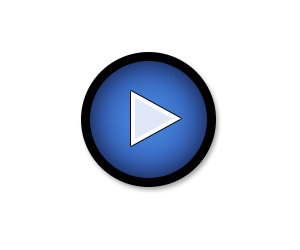My Landing Page Tips For Small Payout Offers
“Do I need a landing page?”
Visit a marketing forum, and you will see this question treated with scorn.
Affiliates are adamant that, 90% of the time, a landing page is required to make money.
You cannot simply direct link paid traffic to affiliate offers and expect to make a profit.
It would be too easy.
Makes sense, right?
90% of the time.
So, assuming that we will probably need a landing page to make money, how do we go about producing a good one?
The Art of the Pre-Sell
When we talk about sending users to a landing page, what exactly do we mean?
We are referring to a page that ‘pre-sells’ the offer.
There are several methods of pre-selling, and some are more controversial than others.
A landing page can be as simple as a form preceded by some bullet points incentives.
Like this template provided by Traffic Plus Conversion:

Or it can be as complex (and widely derided) as a fake news article:

What is a landing page?
It is a bridge in the sales funnel.
An opportunity to create tension so that when the user lands on the affiliate offer, he is ready to convert.
The only offers where you might not need a landing page are those where spontaneity is inherent in the niche.
App installs, for example.
How many of us read sales letters before deciding whether to install an app?
If your banner is self-explanatory, you can *occasionally* make money by direct linking.
But even then, a landing page that does a good job of displaying the utility of the app, will nearly always perform better.
This stumps many affiliates.
Why?
It’s easy to see why an offer that costs $69.95 would require pre-selling.
The user has to justify a purchase.
When we put our minds to this, we can be quite persuasive.
With a low payout offer, the psychology is different.
The offer may be completely free.
And we overestimate the power of ‘free’.
We expect ‘free’ to do the heavy lifting.
We also overestimate the appeal of immediacy.
What good is the ability to have X now, for free, if X is judged to be worthless?
The silence of non-conversions — particularly when an offer is free — should tell you everything about the importance of creating value through a landing page.
Here are some tips for combining landing pages with small payout offers.
Illustrate the function of the product
Users don’t want to be told what a product offers.
They want to be shown.
Your landing page must illustrate the one relevant problem that your product solves.
Focus on the tension associated to that problem.
Condense it and provide the solution.
Do affiliates promote speed booster apps with sales letters and meandering prose?
No, they use visual storytelling melded to one good incentive, like this:

Regardless of your moral stance on this type of install-bait, the app’s utility is plain to see.
The lesson?
Keep it simple!
- Here’s your problem.
- Here’s how our product solves it.
- Here’s how to get started.
The faster you combine these three elements, the sooner you’ll create a funnel capable of monster profits.
Learn to focus attention fast
The worst banners can sometimes produce the best profits.
Affiliates know this.
That’s why the web is littered with ‘creatives’ (I use the term loosely) that look like this:
![]()

What is the strategy here?
It’s certainly not CPC.
The strategy is simply to get as many users as possible to click through to a landing page.
It’s a method of converting CPM display traffic in to cheaper (and more malleable) pop-style traffic, with a much higher engagement rate than you’d see on pop sources.
A process that goes like this:
- The banner captures a stray click.
- The landing page engages the user, very quickly, and plants a desire.
- The offer sells on that desire.
Offers with mainstream appeal are selected, very carefully, to ensure that the funnel is relevant to a large audience.
You won’t find dating offers for men over 30, but you will find battery saving apps, speed boosters, antivirus scanners, chances to win an iPhone, and Whatsapp bundles.
The idea is that the campaign is pre-targeted to an extent that the affiliate already has a decent idea of who is viewing the ads.
(e.g. Samsung users, Android device, WIFI, USA.)
He focuses on finding a mainstream offer to serve this market.
Then aims to get maximum eyeballs on his landing page.
The landing page is where the battle is won.
Some of the crudest sales funnels in our industry succeed by pairing ‘accidental click’ banners with landing pages that assault the user’s fleeting attention span.
Bold, brash headlines with visual storytelling work well.
So does replicating the look of other popular websites to provide a comfort blanket.
Here are two popular techniques that follow the ‘bait and switch’ banner:
- Scare tactics — Your phone may be unprotected! Scan now.
- ‘Too good to pass up’ — I have a chance to win an iPhone? Huh?
In either case, you are likely to induce a reaction along the lines of…
*grunt*
“The fuck are you talking about?”
And it is your landing page’s task to get talking; fast.
Ramp up the tension to act today — this very second.
We are not brand advertisers.
A Shutterstocked banner that makes an inoffensive contribution to a brand’s ‘arcing story’ might secure its designer a promotion, but it won’t put dinner on an affiliate’s table.
We need strong creatives.
It is our number one priority to get a response now; today; in the next 4 minutes and 58 seconds.
One of the most common uses of an affiliate landing page is thus to artificially manufacture a sense of urgency.
We strive for that ‘Shit your pants’ moment.
Some of the greatest hits to our reputation come from affiliates acting too aggressively in this respect.
We do, indeed, succeed in creating a maelstrom of shat pants.
And the stench starts to drift.
Most advertisers treat their offer pages as a shop window.
“Great, you noticed us! Here’s what we offer. Here’s a link in case you want to get started today.”
We affiliates are the expendable sops tasked with standing outside that shop window, dressed as werewolves, and yelling loud enough that passers-by might actually listen.
The landing page is our megaphone.
Your job when designing your next landing page is to think:
“How can I take this product, match it to a burning desire (or fear), ramp up the tension, and then force a resulting action today?”
If your landing page fails to add tension or desire, then it fails.
That’s the acid test for your pre-sell.
Is it so pants-shittingly good that it works today?
Tomorrow is somebody else’s commission.
The Low Payout Dilemma
There are perfectly capable affiliates who overlook entire markets because they believe the offer payouts are too small.
What can you do if the lead is only worth $0.20, or $0.10, or $0.07?
Never mind that the offer accepts traffic in Jordan.
Never mind that click prices are exponentially cheaper.
Never mind that hundreds of thousands of users in a new market are completely bamboozled by their first sighting of the ‘affiliate ad’.
Who needs context, eh?
The story we prefer is “I’m used to paying $0.15 for a click in the US, therefore these offers are a complete washout. The economics are fucking alien. Why bother with them?”
Some affiliates will harbour this contempt whilst throwing $100, direct linked, at a couple of app installs on Decisive.
They assume that because their banner depicts the correct brand, the conversions should swiftly follow.
How simple is that?!
What part of the process instills you with a sense of job security?
Because if you can find it, I’ll buy it.
In a bottle.
And drink it every night.
You have to do better than the average affiliate.
That’s how our industry works in 2015.
- What can’t you change? The offer.
- What can’t you beat? The CTR of a ‘Play / Download’ banner.
What does that leave?
It leaves the landing page: your ability to get from A to C.
Your ability to create angles; to illustrate a product effectively; to deliver a blunt call-to-action that is difficult to avoid.
It doesn’t matter how small the payout is.
The result of not selling the offer is always the same: $0.00.
RECOMMENDED THIS WEEK:
- In case you missed it, my brand new 2015 edition of Premium Posts is available now. Need a recipe for affiliate success in 2015? You won’t find a single resource that covers as much ground as this. 375 pages of my very best tips and strategies.
- The Premium Posts 2015 Edition is sponsored by Adsimilis. You know all about Adsims, right? They are one of the best CPA networks in the business. If you run any kind of mobile, dating or sweepstakes… then sign up an affiliate account, ca-ching.
P.S. You can read 40 pages of Premium Posts 2015 for FREE by opting in to my monthly newsletter below:


“We do, indeed, succeed in creating a maelstrom of shat pants”
That’s something only affiliate marketers and “Little Chefs” could achieve regularly
Thanks for the insights. I’m currently working on Games apps install and have been debating with myself whether it is worth creating a landing page for such low offers.. I guess, after reading your article, I should start testing out with landing pages for those offers 🙂
Good idea, thank you for share
Make money with clickbank
Finch! If a travel booking offer such as booking.com is available and they’ve already got a landing page as it’s ecommerce. Do you still have to create a landing page for it as I’m thinking of sending traffic via Facebook PPC directly to the offer. Or is that a no-no?
great article Finch!